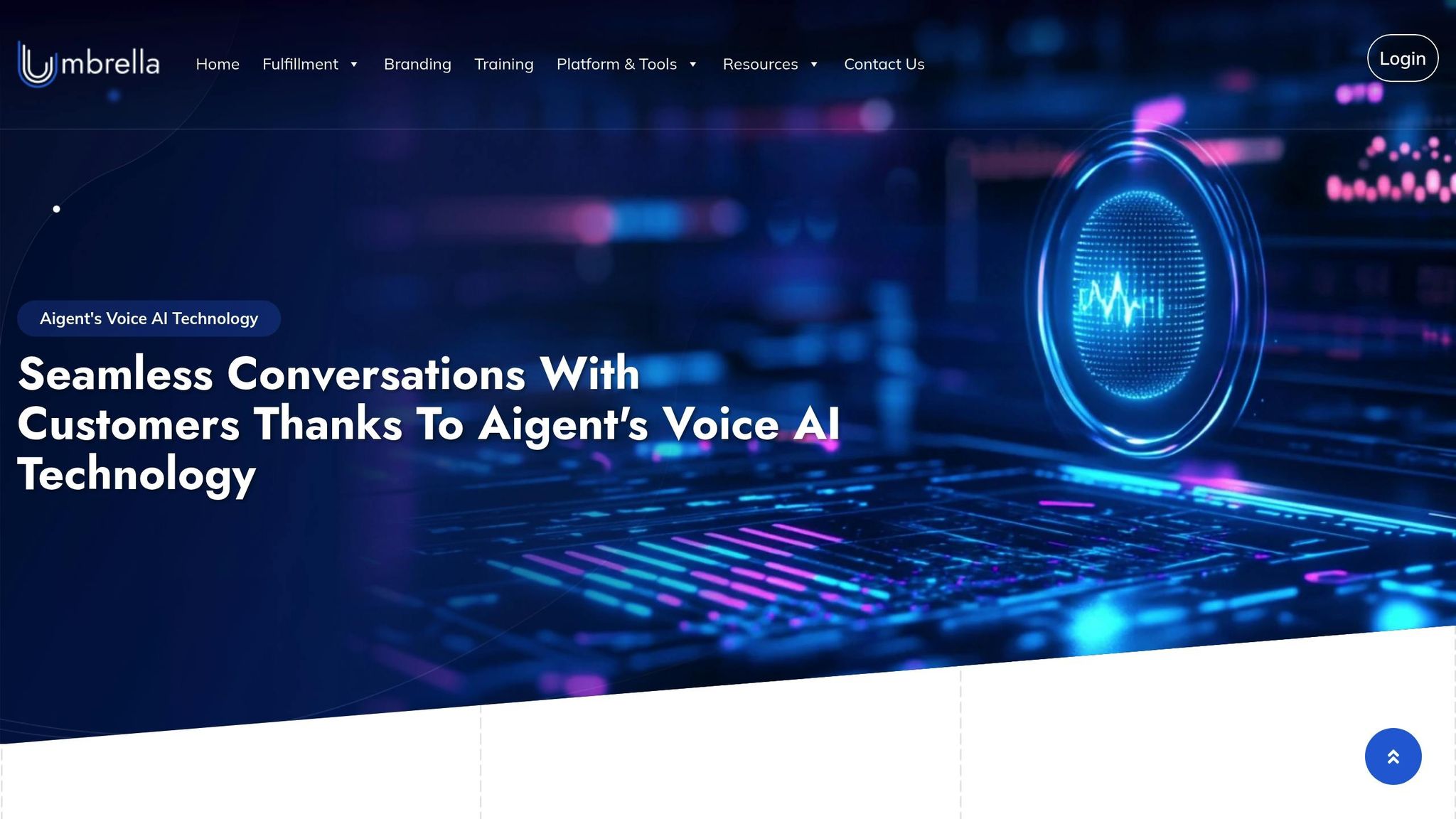How to Measure ROI of Voice AI Agents
Learn how to effectively measure the ROI of Voice AI agents by setting clear goals, tracking key metrics, and analyzing costs and benefits.

Want to know if Voice AI is worth the investment? Here's how you measure its ROI:
- Set Clear Goals: Focus on automating tasks, improving customer experience, or driving growth.
- Track Key Metrics: Monitor automation rates, customer retention, conversion rates, and cost savings.
- Calculate Costs: Break down one-time (e.g., setup) and recurring (e.g., subscriptions) expenses.
- Measure Financial Benefits: Look at cost reductions (e.g., fewer staff hours) and revenue growth (e.g., higher retention and conversions).
-
Use ROI Formula:
ROI = ((Total Benefits - Total Costs) / Total Costs) × 100 - Review Regularly: Use dashboards to track KPIs and adjust your strategy for better results.
Quick Example:
A company using Voice AI handled 200 automated calls daily, boosting retention by 34% and conversions by 41%. Automation of L1-L2 tasks reached 77%.
Voice AI can save costs, improve efficiency, and increase revenue - just ensure you measure and refine consistently.
Setting Goals and Metrics
Voice AI Business Goals
When implementing Voice AI, businesses often focus on three main areas: automating contact centers, offering personalized experiences, and acquiring new customers. These priorities will guide the KPIs you define.
Each goal should align with the ROI drivers you previously identified:
Operational Efficiency
- Automate repetitive customer interactions
- Shorten response times
- Handle more calls simultaneously
- Cut operational costs
Customer Experience
- Increase first-call resolution rates
- Boost customer satisfaction
- Offer 24/7 support availability
Business Growth
- Improve customer retention, drive conversions, and generate qualified leads
Success Measurement Metrics
To evaluate how well your Voice AI is performing, track the following metrics that directly connect to your objectives:
- Support automation rate: Measure the percentage of L1-L2 tasks automated
- Customer retention rate: Look for measurable improvements, such as a 34% increase
- Conversion rate: Monitor progress toward specific targets, like achieving a 40%+ conversion rate
Make sure your metrics are clear, measurable, and directly tied to your goals. Benchmark them against industry standards and update them regularly to refine your strategy.
Consistently tracking and adjusting these metrics will help you fine-tune your Voice AI system, ensuring it delivers the best possible ROI.
Measuring Current Performance
Gathering Cost and Performance Data
Before introducing Voice AI, collect baseline metrics to evaluate the return on investment (ROI). Focus on these key areas:
Operational Costs
- Average cost per customer interaction
- Staffing expenses, including regular, overtime, and peak-period costs
- Costs for training, onboarding, and maintaining technology infrastructure
Performance Metrics
- Daily call volumes and patterns
- Average handle time (AHT)
- First call resolution rate (FCR)
- Customer satisfaction scores (CSAT)
- Agent utilization rates
- Performance during peak hours
- Backlog statistics for support tickets
Gather this data over 3–6 months to account for seasonal trends. Use these insights to establish performance targets.
Setting Performance Benchmarks
Your benchmarks should align with the operational goals, customer experience improvements, and growth targets you’ve already defined. These benchmarks will help measure Voice AI's impact effectively.
Key Areas for Benchmarking:
- Support Efficiency: Use your current L1–L2 support coverage as a baseline (e.g., 77%).
- Customer Engagement: Monitor retention and conversion rates, aiming for improvements such as +34% retention and +41% conversion.
Example Benchmark Documentation Table:
| Metric Category | Current Performance | Target Performance | Measurement Frequency |
|---|---|---|---|
| L1-L2 Support Automation | 0% | 70-80% | Monthly |
| Customer Retention | Baseline | +30-35% | Quarterly |
| Conversion Rate | Baseline | +35-40% | Monthly |
| Call Volume Handling | Current max/day | +200 calls/day | Weekly |
Once benchmarks are in place, the next step is to calculate costs and benefits.
How To: Aigent Voice AI ROI Calculator by Umbrella

ROI Calculation Steps
To calculate ROI, start by identifying performance benchmarks, then quantify costs and benefits.
Voice AI Implementation Costs
Break down all one-time and recurring costs associated with implementing Voice AI:
One-Time Costs:
- Licensing fees for the Voice AI platform
- System integration and customization efforts
- Initial training and setup expenses
- Necessary infrastructure upgrades
Recurring Costs:
- Monthly or annual subscription fees
- Maintenance and software updates
- Continuous training and system optimization
- Technical support services
- Costs for scaling additional capacity
Voice AI Financial Benefits
Assess the financial advantages Voice AI can deliver:
Direct Cost Savings:
- Lower staffing expenses due to automated L1–L2 support
- Reduced costs for training and onboarding
- Savings on overtime payments
- Decreased infrastructure-related expenses
Revenue Growth: According to NAITIVE data, Voice AI can lead to a 34% increase in retention, a 41% boost in conversions, and automation of 77% of L1–L2 tasks.
ROI Formula
Use the following formula to calculate ROI:
ROI = ((Total Benefits - Total Costs) / Total Costs) × 100
ROI Measurement Tools
Once you've calculated costs and benefits, the next step is selecting tools that can measure ROI with precision.
ROI Analysis Tools
Integrated dashboards are a great way to track ROI in real-time. These dashboards can help you monitor essential metrics like:
- Call volumes
- Average handle time (AHT)
- First call resolution (FCR)
- Cost per interaction
- Customer satisfaction (CSAT)
- Net Promoter Score (NPS)
- Call deflection rates
- Peak-hour performance
- Error rates
- Agent performance analytics
ROI Measurement Process
To ensure consistent ROI tracking, follow this straightforward process:
Data Collection Phase
Gather daily metrics such as total call volume, resolution rates, customer feedback, system uptime, resource utilization, error incidents, and cost per interaction.
Analysis Framework
- Weekly: Track trends in AHT, FCR, and CSAT to fine-tune operations.
- Monthly: Calculate operating costs, cost per interaction, and training expenses.
- Quarterly: Evaluate cost savings, revenue impact, customer satisfaction, and efficiency improvements.
ROI Tracking and Updates
Once you've set up your measurement tools, it's time to focus on regularly monitoring and updating your ROI data.
Regular ROI Reviews
Plan monthly or quarterly reviews that align with your business cycles. Use these sessions to monitor key KPIs, ensuring you can spot and address potential issues before they grow into larger problems.
Performance Improvements
Use the insights from your ROI tracking to tweak and improve your systems. This might involve adjusting conversational flows, refining training data, or reworking escalation paths to enhance overall performance.
You might also consider using AI as a Managed Service. This approach includes benefits like continuous optimization, ongoing performance monitoring, and proactive fine-tuning to keep your systems running smoothly.
Conclusion
Assessing the return on investment (ROI) for Voice AI helps businesses make informed decisions and achieve sustainable growth by focusing on detailed metrics.
Case studies from NAITIVE AI highlight improvements in both customer retention and conversion rates.
To effectively measure ROI, follow these steps:
- Define clear, measurable objectives that align with your business goals.
- Establish baseline metrics before rolling out Voice AI solutions.
- Monitor both cost reductions and revenue increases for a full picture of impact.
- Conduct regular performance evaluations to ensure ongoing success.
- Use ROI analysis to guide adjustments and optimize performance over time.
Reach out to NAITIVE AI Consulting Agency to begin assessing and optimizing your Voice AI investment.




